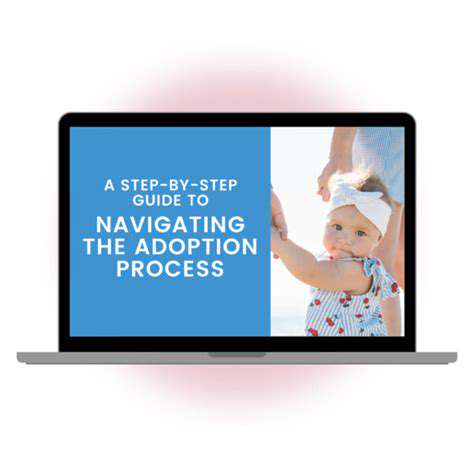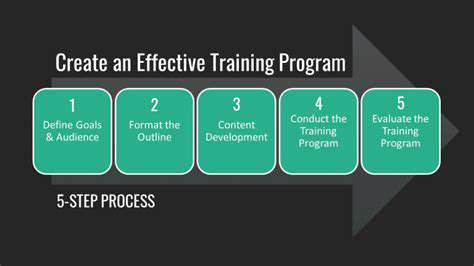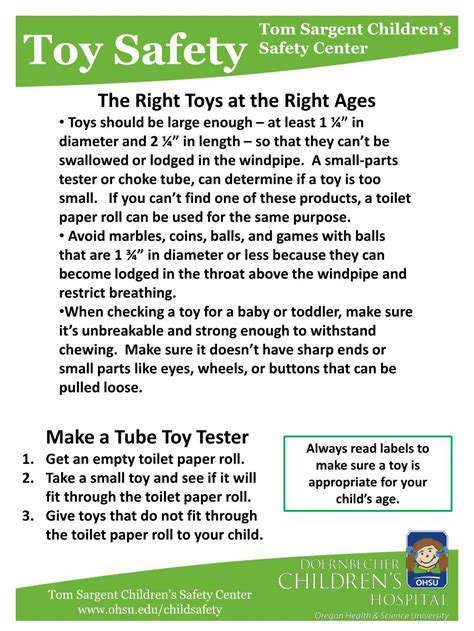Guide to Adopting a Dog from a Shelter
Understanding Your Lifestyle
Bringing a dog into your life isn't just about cute photos and wagging tails—it's a serious commitment that demands time, energy, and resources. Before you start browsing adorable puppies, take a hard look at your daily routine. Are you constantly juggling work meetings, or do you have flexible hours for walks and playtime? Some breeds need hours of exercise, while others are content with short strolls. Be brutally honest about how much attention you can realistically give.
Your living space matters more than you might think. That energetic Border Collie might struggle in a studio apartment, while a laid-back Bulldog could thrive there. Got kids? Their ages and energy levels should directly influence your choice—a high-strung terrier might not mix well with toddlers. The right dog should complement your family dynamics, not complicate them.
Identifying Your Needs and Preferences
Beyond practical considerations, what kind of canine personality clicks with yours? Maybe you're dreaming of a jogging buddy, or perhaps a couch companion suits you better. Allergies can throw a wrench in your plans—some hypoallergenic breeds might still trigger reactions. And let's talk money: between vet bills, premium food, and unexpected emergencies, costs add up fast. If you're budgeting tightly, a smaller breed might be more manageable.
Past experiences shape present choices. That childhood Golden Retriever might make you lean toward large breeds, while a bad experience with a nippy Chihuahua could steer you toward mellower temperaments. Make a list of must-haves and deal-breakers—it'll save you from impulse decisions when you meet those soulful puppy eyes.
Exploring Different Dog Breeds and Temperaments
Now the fun part—research! Dive into breed characteristics like you're studying for an exam. That Siberian Husky's stunning blue eyes come with a need for marathon-level exercise. Pugs? Adorable but prone to breathing issues. Shelter visits are eye-opening—you might discover your perfect match isn't the breed you originally considered. Staff often provide invaluable insights about each dog's unique personality.
Don't just rely on online descriptions. Chat with breed-specific rescue groups—they'll give you the unvarnished truth about what living with that breed really entails. When visiting shelters, observe how dogs react to various stimuli. That shy mixed-breed hiding in the corner might blossom into your perfect Netflix companion with some patience.
Considering Adoption from Shelters and Rescues
Shelter dogs aren't damaged goods—many are there through no fault of their own. You're not just getting a pet; you're saving a life while often skipping the challenging puppy phase. Rescues typically assess temperament thoroughly, so you know exactly what you're getting. Many even offer trial periods—a safety net rare with breeders.
The support doesn't end at adoption. From behavior hotlines to discounted training classes, many organizations provide resources to ensure successful transitions. You're joining a community that genuinely cares about creating lasting bonds between humans and their rescue pets.

The Adoption Process: Navigating the Steps

Understanding the Application Process
The adoption application isn't bureaucracy—it's a mutual compatibility test. Shelters want to prevent returns, so they dig deep. That home visit isn't an invasion; it ensures your space is safe for a specific dog's needs. Be prepared for personal questions—your work schedule, pet experience, even your vacation plans matter.
Each organization has unique requirements. Some prioritize fenced yards, others value canine experience. Call ahead to understand their deal-breakers. Transparency works both ways—if you're honest about limitations, they can suggest suitable matches.
Preparing Your Home for a New Pet
Pet-proofing goes beyond hiding cables. That houseplant could be toxic, and loose medications pose serious risks. Designate a safe zone with bedding and water—new arrivals often need quiet time. Invest in quality chew toys unless you want your shoes sacrificed. Baby gates can create gradual introduction spaces for resident pets.
Stock up on supplies before adoption day. The last thing you want is scrambling for poop bags during those critical first hours. Having everything ready communicates stability to your new companion.
Meeting the Animal and Making a Connection
First meetings reveal more than photos ever could. Watch how the dog interacts with staff—it shows their true personality. Don't force interaction; let them approach you on their terms. Ask to walk them outside the shelter environment; many dogs behave completely differently away from kennel stress.
If possible, schedule multiple visits. That perfect dog might reveal anxiety issues on second meeting, while an overlooked older dog might surprise you with their gentle nature.
Post-Adoption Support and Ongoing Care
The real work begins after the paperwork. Many shelters offer free behavior consultations—use them! That 3-day adjustment period is myth; true settling takes months. Keep the shelter's number handy; they've seen every transition challenge imaginable.
Consider pet insurance during the honeymoon phase—pre-existing conditions won't be covered later. And register with a vet immediately, even for healthy-seeming pets. Establishing care early prevents emergencies later.
Name recognition forms the foundation of effective communication, whether you're building a brand or bonding with a rescue dog. In our distraction-filled world, a name that sticks cuts through the noise and creates meaningful connections. Think of it as the first brick in building trust—that initial moment of recognition opens doors to deeper relationships.
Long-Term Care and Ongoing Support
Understanding Long-Term Care Commitments
Adoption is a decade-plus promise. Senior dogs need joint supplements; active breeds require conditioning throughout their lives. That adorable puppy will eventually need geriatric care—plan for it now. Create a five-year budget including dental cleanings, potential surgeries, and end-of-life care.
Document everything. Medical records, behavior notes, even food preferences—this history becomes invaluable during vet visits or if you need pet sitters.
Financial Considerations for Ongoing Support
Beyond basics, factor in what-ifs. Pet insurance can prevent heartbreaking choices later. Set up a dedicated savings account—aim for $5,000 minimum for emergencies. Research care credit options before you need them.
Budget for lifestyle changes too. That dream vacation might need pet-friendly accommodations. Regular dog walkers or daycare add up quickly.
Essential Supplies and Equipment
Quality matters. That cheap collar could fail during a critical moment. Invest in a GPS tracker—one sprint after a squirrel could lead to tragedy. Rotate toys to prevent boredom; puzzle feeders stimulate minds.
As your dog ages, needs change. Orthopedic beds, ramps, and raised bowls can extend comfortable years. Buy adjustable gear that grows with them.
Addressing Behavioral Needs and Training
Consistency is everything. Enroll in obedience classes—even experienced owners benefit from professional guidance. That cute puppy behavior becomes problematic in adults. Address issues early before they become ingrained.
Mental stimulation prevents destruction. Food puzzles, scent games, and trick training build confidence and burn energy.
Socialization and Exercise Requirements
Controlled exposure beats overwhelming encounters. That pandemic puppy missed critical socialization windows—go slow with reintroductions. Dog parks aren't for every personality; structured playdates often work better.
Tailor exercise to breed and age. Senior dogs still need movement—swimming is gentler on joints. Mix up routes to engage their senses.
Veterinary Care and Preventive Health
Prevention saves money long-term. Annual bloodwork catches issues early. Dental health affects overall wellness—don't skip cleanings. Discuss breed-specific screenings with your vet.
Learn basic first aid. Knowing CPR or how to handle poisoning could save your dog's life before reaching the clinic.
Building a Strong Bond and Relationship
Quality time deepens connections. Training sessions build trust better than endless treats alone. Learn their language—tail wags and ear positions communicate volumes.
Respect their personality. Not every dog wants constant cuddles. Some show love through quiet companionship. Appreciate their unique way of bonding.
Read more about Guide to Adopting a Dog from a Shelter
Hot Recommendations
- Review: [Specific Brand] Small Animal Cage
- Why Rescuing Pets Saves Lives
- Best Pet First Aid Kits [What to Include]
- How to Help Stray Animals in Your Community
- Guide to Adopting a Pet When You Have Kids
- Top Reptile Heat Lamps
- Heartwarming Rescue Stories That Will Inspire You
- Review: [Specific Brand] Bird Cage
- Best Aquarium Filters [2025 Review]
- Review: [Specific Brand] Smart Litter Box





![Review: [Specific Brand] Pet Odor Eliminator](/static/images/33/2025-05/ValueforMoneyandAlternatives.jpg)
![Best Aquarium Heaters [2025 Review]](/static/images/33/2025-05/KeyFeaturestoConsider3ADurability2CSafety2CandEaseofUse.jpg)
![Guide to Caring for [Specific Cat Breed, e.g., Maine Coon]](/static/images/33/2025-05/HealthConsiderationsforMaineCoonCats3AAProactiveApproach.jpg)



